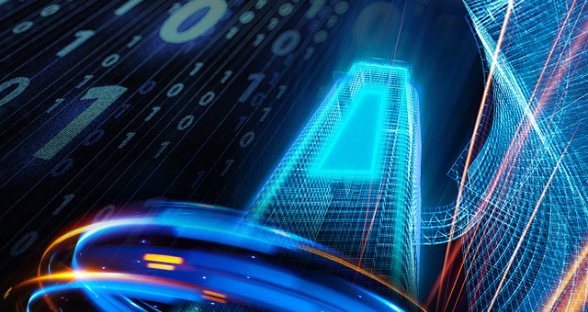
When your marketing team wants to launch a new campaign, you ask for the projected return on ad spend. When your operations team wants a new piece of machinery, you demand a full analysis of its impact on production efficiency and long-term maintenance costs.
So, when your Chief Technology Officer comes into your office and asks for a significant, recurring budget line item for something called a “Content Delivery Network,” your reaction is rightfully skeptical. The pitch you hear is often a swirl of technical jargon about “milliseconds,” “caching,” “latency,” and “edge nodes.”
You might be tempted to translate all of that into a single, simple metric: “So, you’re telling me you want to spend X dollars to make our website load half a second faster?”
How do you, the financial steward of the business, even begin to put a dollar value on half a second?
This is the conversation that needs to change. Too often, the business case for a CDN is made (and rejected) on the basis of these soft, hard-to-quantify performance metrics. The reality is that a modern CDN is not just a performance tool; it is a powerful, multifaceted financial instrument. Its true ROI is not measured in milliseconds, but in hard dollars saved, new revenue generated, and catastrophic risks averted.
This is not a technical guide. This is a CFO’s guide. We will tear down the wall of jargon and build a clear, quantifiable business case. We will provide you with the framework and the right questions to ask, allowing you to calculate the true, comprehensive ROI of a CDN investment for your business.
Chapter 1: Deconstructing the "I" - The Full Scope of the Investment
Before we can calculate the return, we must be clear about the investment. For our purposes, the “I” in the ROI equation consists of two main parts:
Direct Costs: This is the most straightforward component—the monthly or annual subscription fee for the CDN service. This is the number your CTO brings to you on the budget request.
Implementation & Management Costs: This is the “soft” cost of your engineering team’s time to initially configure the service and manage it on an ongoing basis. A key selling point of a modern, user-friendly CDN platform is that this cost is minimal, often just a few hours for initial setup, compared to the huge labor costs of managing infrastructure without one.
For the rest of this guide, we will treat the CDN’s subscription fee as the primary “Investment.” Our goal is to prove how the “Return” dwarfs this number, often by an order of magnitude.
Chapter 2: The “R” Part 1 - Hard Savings Your Accountant Can See (Cost Reduction)
The fastest way to generate a positive ROI is not by making more money, but by spending less. A modern CDN directly attacks several of the largest and most volatile line items on your monthly cloud infrastructure bill.
The Analogy: Upgrading Your Factory’s Assembly Line
Imagine your website’s infrastructure is a factory assembly line. A CDN is like investing in a new, hyper-efficient, automated robotic system. The most immediate returns come from the operational costs it saves.
Line Item A: Slashing the Cloud Egress Bill
This is the single largest, most direct, and most often misunderstood saving. “Egress” is the fee that cloud providers like AWS, Google Cloud, and Azure charge you every time data leaves their network. It is, by far, one of the most expensive and unpredictable costs in any cloud budget.
Without a CDN, every single image, every CSS file, and every video that a user views must be transferred out of your origin server’s cloud network (e.g., from an AWS S3 bucket) and sent to the user. You pay the high egress fee on 100% of your traffic.
With a CDN, you change the game. By caching your content at the edge, you might achieve a 95% cache-hit ratio. This means 95% of your data is served from the CDN’s cache and never leaves your origin server’s network. You only pay the expensive egress fees on the remaining 5% of traffic (the cache misses).
The ROI Calculation:
Let’s say your site serves 50 TB of traffic per month.
Your cloud provider’s egress fee is roughly $0.09 per GB.
Without CDN:
50,000 GB * $0.09/GB = $4,500 / monthWith CDN (95% cache-hit):
(50,000 GB * 5%) * $0.09/GB = $225 / monthMonthly Saving: $4,275
If your CDN subscription costs, say, $500 per month, this single factor alone has already generated an ROI of over 750%. For any content-heavy business, this is the beginning and the end of the financial case.
Line Item B: Downsizing Your Server Fleet (The Compute Dividend)
Every request served from the CDN’s cache is a request your origin servers did not have to process. This means less CPU load, less memory usage, and fewer database connections.
The Analogy: Your new robotic assembly line is so efficient that you can sell off half of your old, power-hungry machinery.
The Business Impact: You can directly reduce the size and number of your virtual machines. The team that was managing a cluster of ten large compute instances might find that three smaller instances are now more than sufficient to handle the reduced origin traffic.
The ROI Calculation:
(Number of Decommissioned Servers) x (Monthly Cost Per Server) = Monthly Compute SavingsFor many businesses, this can translate into thousands of dollars in direct savings on their monthly cloud compute bill.
Line Item C: Consolidating Your Security Budget
Instead of purchasing, integrating, and managing three or four separate security products—a WAF from one vendor, DDoS mitigation from another, Bot Management from a third—a modern CDN platform bundles these services into a single, integrated offering. This consolidation is not only more secure (as the services work together) but almost always more cost-effective than buying them a la carte.
Chapter 3: The “R” Part 2 - The Upside Gain (Revenue Generation)
Now we move from saving money to making money. This is where the half-second of page load time starts to translate into real dollars.
The Conversion Rate Engine
This is not a theoretical benefit; it is one of the most heavily documented phenomena in e-commerce. Faster websites make more money.
Google found that a 1-second to 3-second delay in page load time increases the probability of a user bouncing by 32%.
Walmart found that for every 1-second improvement in page speed, they saw up to a 2% increase in conversions.
A CDN is the single most powerful tool for dramatically improving page load speed for a global audience.
The ROI Calculation (for a CFO):You can model this impact directly. Let’s be conservative:
Your e-commerce site generates $10 million in annual revenue.
The CDN improves your average page load time by 1.5 seconds.
Based on industry data, you conservatively project this will lead to a 2.5% increase in your conversion rate.
Additional Annual Revenue:
$10,000,000 * 2.5% = $250,000
This is new, high-margin revenue generated directly from the performance improvement.
The SEO Flywheel (The Organic Growth Engine)
Google has been explicit: website speed and a secure (HTTPS) connection are critical ranking factors. A CDN is the best tool for improving both. A higher ranking in Google search results means more free, high-intent organic traffic.
The ROI Calculation:You can assign a direct financial value to this new traffic by calculating what it would have cost to acquire it via paid search (PPC).
(Additional Organic Visitors per Month) x (Your Average Cost-Per-Click) = Monthly SEO ValueThis represents marketing budget saved or new traffic acquired, both of which contribute directly to the ROI.
Chapter 4: The Priceless “R” - The Financial Value of Risk Mitigation
How much is it worth for a catastrophic event not to happen? For a CFO, risk is a liability on the balance sheet. Reducing that liability has a tangible financial value.
The Cost of Downtime
What is the cost to your business if your site is down for one hour during your peak season?
The Formula:
(Lost Revenue per Hour) + (Lost Productivity per Hour) + (Potential Brand Damage Cost)The CDN’s Role: A CDN is your primary defense against the two most common causes of downtime:
Traffic Spikes: It absorbs sudden, massive spikes in legitimate traffic (e.g., from a successful marketing campaign) that would otherwise crash your origin server.
DDoS Attacks: Its massive, distributed network is the only effective way to mitigate large-scale DDoS attacks, which are a constant threat.
By drastically reducing the likelihood and duration of downtime, the CDN directly lowers your Annualized Loss Expectancy (ALE).
The Cost of a Data Breach
For a FinTech, or any business handling user data, a breach is an existential threat. The costs are astronomical: regulatory fines (GDPR can be up to 4% of global turnover), customer lawsuits, incident response costs, and a collapse in brand trust.
A CDN’s Web Application Firewall (WAF) is a critical preventative control that sits at the edge and blocks common attack vectors before they ever reach your application. By reducing the probability of a breach, the CDN is acting as one of your most effective insurance policies.
The Final Ledger
Let’s put it all together into a framework you can use. The true return on investment of a CDN is a multi-faceted equation:
Annual Return (R) =(Annual Egress Savings)+ (Annual Compute Savings)+ (Annual Security Tool Savings)+ (Additional Revenue from Conversion Lift)+ (Value of Additional SEO Traffic)+ (Value of Reduced Downtime Risk)+ (Value of Reduced Breach Risk)
Total Investment (I) =Annual CDN Cost
True ROI = (R - I) / I * 100%
When you look at the full picture, the conclusion becomes clear. The conversation about a CDN should never start with milliseconds. It should start with dollars.
The next time your technology team proposes a CDN investment, don't just ask them how much faster it will make the website. Ask them to help you fill in the numbers for this ROI equation. You will almost certainly find that it is not an IT expense to be minimized, but one of the highest-yield, most financially sound investments your company can make in its own growth, efficiency, and long-term resilience.

